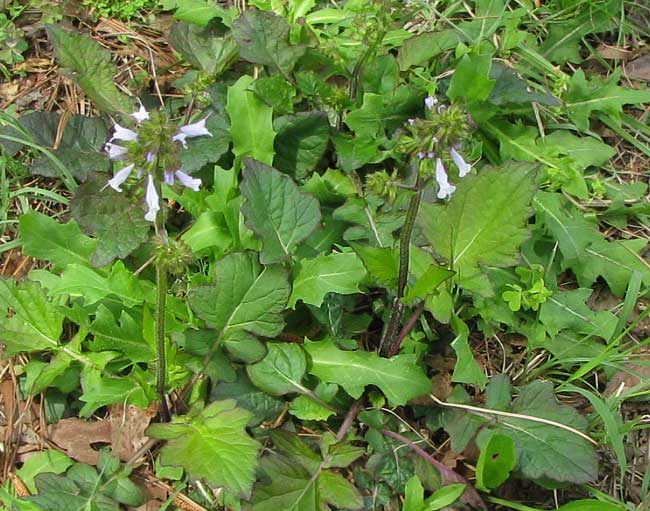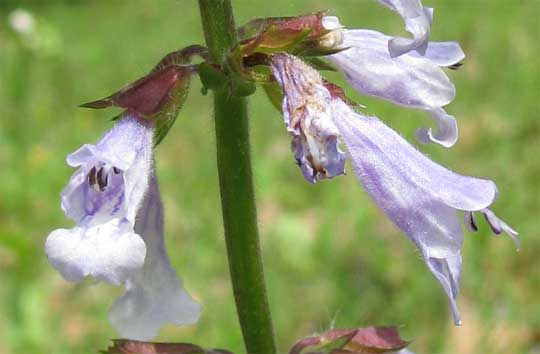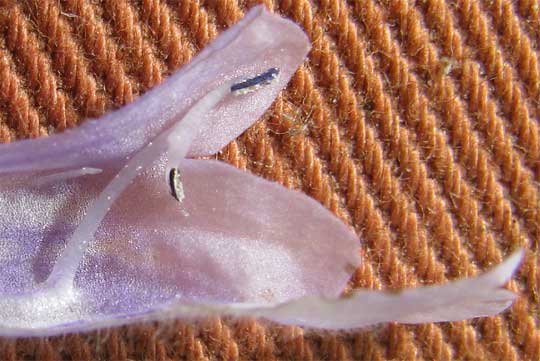Excerpts from Jim Conrad's
Naturalist Newsletter

from the the April 6, 2009 Newsletter, issued from the forest near Natchez, Mississippi; elevation ~400ft (120m), ~N31.47°, ~W91.29°:
LYRELEAF SAGE FLOWERING
Lyreleaf Sage, SALVIA LYRATA, is a native, woodland- growing, eastern US plant so pretty that it's included in almost all wildflower books, yet also it can be so abundant along highways, in lawns and other disturbed habitats that sometimes it's called a weed. You can see its unusual leaves and inch-long blossoms above.
Along the Natchez Trace Parkway between here and Nashville at this time of year there are stretches of mile after mile of roadside tinged blue with close-together, flowering Lyreleaf Sages.

Above you can see how nicely the flowers are adapted to pollinators such as bees who land on the corolla's lower lip, then follow striped "nectar guides" into the flower's depths where nectar awaits. On the flower at the right, notice how an entering bee's back already dusted with pollen from another flower first touches the wishbone-shaped, stigma-tipped female style, depositing male pollen there, then as it continues its back is daubed with a new load of pollen from this flower's stamens.
The blossom's pollination strategy is even more ingenious than that. Look at the unique stamen shown below:

There I've cut lengthwise through the blossom so that you're seeing one of the flower's two stamens as it arises from the corolla's floor and arches to the ceiling. The stamen's stemlike filament is branched at its top, the top branch bearing a fully formed, pollen-producing anther-half while the lower arm bears a less developed anther-half. That lower anther and arm project into the corolla's passageway so that a pollinator enters it must shove against it. When that bottom arm is nudged backwards, the top arm is forced downward, daubing pollen on the pollinator's rear end!
Lyreleaf Sage belongs to the same genus as Scarlet Sage of gardens, and Scarlet Sage flowers have similarly tricky stamens. Sages are members of the Mint Family.